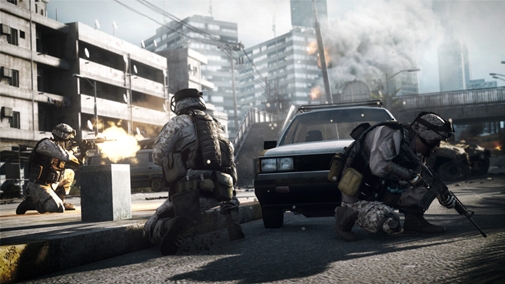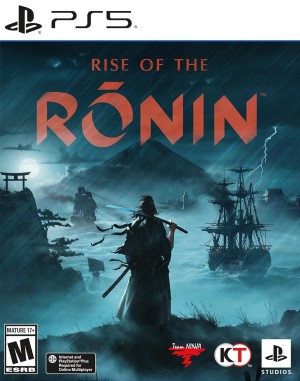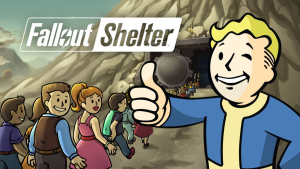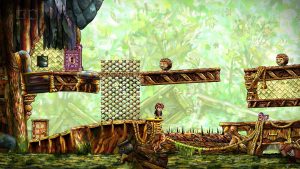Lighting is a major part of video games these days. Better lighting can create rich experiences and more immersion for the end user. But behind these awesome experiences lies complicated technology. One such middleware company that provides lighting technology is UK-based Geomerics and its solution Enlighten has already been used in big games like Battlefield 3, Need for Speed The Run, Medal of Honor Warfighter and many more. We caught up with Dr. Chris Doran, Founder & COO of Geomerics and we discussed in depth about what the next gen has to offer, the evolution of gaming tablets, restrictions of current generation consoles and more.
Check out the full interview below.
Rashid Sayed: Geomerics is already looking towards next generation consoles by working on high end PCs. How much of an improvement in dynamic lighting we are going to see when next-gen consoles become available?
Chris Doran: That is a bit of a leading question as neither Sony nor Microsoft have said anything officially about the existence of next generation consoles. So for now let’s just assume that high-end PCs are representative of what might be available in a future console. Our view is quite simple. Fully dynamic global illumination is a nice-to-have on this console cycle, but in the future it will be a must-have. Dynamically computed lighting brings so much to the visuals of a game compared to the alternative of just baking everything into static ‘lightmaps’.
Once artists can design game levels knowing that the lighting is fully dynamic we will see a real step-change in creativity. Level lighting artists will start to take on the responsibilities of a film cinematographer and I expect to see games that rival the best-looking films in terms of visual impact.
Rashid Sayed: PC gaming technology is growing at a fast pace and technically speaking the PS3/Xbox 360 are lagging behind. Does the current gen consoles restrict you in anyway? The PlayStation 3 still has a lot of RAM issues. How do you guys overcome these kind of limitations?
Chris Doran: Making games for the PS3/360 generation does bring challenges compared to modern PCs, though we have learnt a huge amount in terms of squeezing optimum performance out of those machines. You always get this on a console cycle. If you look at the games coming out at the end of the cycle, like Medal of Honor: Warfighter, I think people would say they far exceed what anyone thought possible at the start of the cycle. Certainly, we had people telling us that real-time global illumination was not possible in this console cycle, until we showed that it could be done.
The one issue that we are stuck with, however, is memory. Every part of the game is fighting for memory resource and this inevitably leads to trade-offs. I think a lot of developers are looking forward to a time when they can develop big blockbuster games without the constraints of fitting it all into 512MB.
Rashid Sayed: Enlighten provides support for dynamic lighting, static lighting and hybrid lighting. How do developers choose between the three and are there better options for certain types of games?
Chris Doran: One of the reasons for offering this spread of alternatives is to service the range of hardware that is now available. It is now quite feasible to run Enlighten on mobile devices. Anything from an iPad 2, or similar, onwards has easily enough compute resource for dynamic lighting. But developers need a fallback solution if they are targeting older hardware, or maybe a DS port. So we added in the functionality to bake out some or all of the lighting, as well as the option of computing it up front on level load. This way developers can mix and match lighting schemes depending on the target platform.
The other way they can chose between options is to vary depending on where you are in the game. For areas that are visible but not changing it might make sense to bake out the results. Or it might be sensible to bake out some of the lights and overlay dynamic lighting on top.
Our goal was to provide as many options as possible to the developer and let them chose. The crucial point is that the baked and dynamic lighting are totally consistent, as they use the same underlying technology. This makes the process of mixing schemes appear seamless to the player.
In terms of the types of games that are right for certain lighting, that’s really up to the developer. Some games just don’t need the same level of lighting sophistication that, say, Medal of Honor: Warfighter needs. The important point is that developers have the option of choosing with Enlighten.
Rashid Sayed: What kind of workflow tools does Enlighten provide to the artists so that their creativity is not restricted?
Chris Doran: We provide a suite of tools to make the artist’s life as simple as possible. They use the runtime technology in the authoring process with a real-time preview feature, so they get immediate feedback on the results of changing a lighting configuration. This makes the process of iterating on lighting and colour and texture extremely rapid as the artist immediately sees how the final scene will look on the target platform.
Under the hood there are some more technical aspects to using Enlighten that are fairly standard for games artists – mostly around how you map surfaces into textures. We provide tools to automate this process and aid visualisation so it is easy to debug issues.
In addition, we provide a viewer for Autodesk Maya than enables artists to see their assets lit with Enlighten before they are checked into the game world editor. This is proving very popular with Developers.
Rashid Sayed: How did the integration with EA’s Frostbite 2 engine come about? Was the integration difficult to do? Please share your experience.
Chris Doran: EA’s DICE studio was interested in Enlighten from very early on. They wanted a new lighting solution in their Frostbite 2 engine and took the decision to work with us. We worked closely with DICE to ensure that Enlighten was developed to fit their requirements. This required us to increase the scale of worlds that Enlighten could work with from interiors to entire game levels. It also lead to the development of version 2 of Enlighten, which made Enlighten an order of magnitude more powerful than version 1!
When we first engaged with DICE, Frostbite 2 was being developed for Battlefield 3, which was slated to be a PC game. Over time, two things changed. The first was that Battlefield 3 became a console title, as well as PC. That forced us to optimise the technology even further! The second was that the Frostbite 2 engine became the engine of choice across a range of EA studios. That was great news for us, as it got us straight into a number of fantastic franchises, including the recently released Medal of Honor: Warfighter, and meant we could now work with some of the world’s largest developers.
The integration went fairly smoothly, with DICE taking on the bulk of the work. But the project was very much a co-development effort as we developed Enlighten to get it fully ‘Battlefield ready’.
Rashid Sayed: Were different lighting techniques used in Medal of Honor: Warfighter than in Battlefield 3 or Need for Speed?
Chris Doran: To be honest, we don’t know precisely how developers use Enlighten once they have it integrated into their own pipeline. We do know that the Need for Speed team was more interested in Enlighten for the productivity savings it gave them than the in-game dynamic possibilities. Danger Close had the advantage that the engine was fairly stable when they started work on Medal of Honor, and they used that to push the graphics and lighting quality to even higher levels than before.
Rashid Sayed: How is Enlighten being used in Army of Two: The Devil’s Cartel? Is it any different from other EA games you have worked on?
Chris Doran: The same comment as above applies to Army of Two, and indeed the new Command and Conquer title. They are all built on the Frostbite 2 engine so all are using Enlighten for global illumination. But we don’t have much visibility on precisely how the studios are using Enlighten. It is a broad product and can be used in all sorts of ways, but we often don’t find out how it is used until the game is released. What is noteworthy, however, is that the capabilities of Frostbite 2 have expanded to different genres, and so too have the needs for lighting. We really look forward to seeing what they do with our technology for those genres.
Rashid Sayed: Improvements in technology are happening day after day. Where do you draw the boundaries for realism in lighting? Do you see a saturation point for this technology anytime soon?
Chris Doran: The first thing to say is that the goal with Enlighten isn’t necessarily ‘realism’. We provide all sorts of handles into the technology that allow artists to mess with the laws of physics and create almost any look they want. So DICE and Danger Close, for example, were going for a very realistic look in Battlefield 3 and Medal of Honor: Warfighter; but Airtight went for something totally different in Quantum Conundrum, which has a deliberately ‘cartoony’ look.
So the goal is not just to shoot for the greatest level of realism – the goal is to provide the most flexible tools and technology to enable artists to generate any type of look that they are after. This is a much wider, and more open-ended, goal. I don’t think we are close to saturation point in terms of chasing that target.
In addition, there are vast numbers of open unsolved problems in lighting. If you look at how we model the interaction between light and atmospheric effects like smoke and fog, we are still some way off what is used in film. I don’t think we would draw the line until we could get much closer to using lighting the way the best cinematographers do.
Rashid Sayed: The middleware is also available for the Nintendo Wii U. Any major Wii U games/developers utilizing this technology yet?
Chris Doran: Unfortunately, we cannot comment on games that are in production that are unannounced.
Rashid Sayed: The Roman tech demo was breathtaking to say the least. Does the physics of an object, say the red flag has to be pre-defined so that the lighting can be dynamic? Or does lighting adapt itself to the dynamic physics of the object as well?
Chris Doran: There are multiple ways of handling dynamic objects in the world, and which solution is used depends on the memory and compute budget, and how important the effect is. The lighting automatically adjusts itself to dynamic changes in the colour of a surface, as you can see when the awning changes colour. We have technology for handling dynamic objects as well, which was showcased at GDC 2012. We see this as appropriate for newer hardware, sitting at the most dynamic end of the spectrum of options we offer to developers.
11. How do you think mobile/handheld/tablet devices will evolve when it comes to pushing technology? It is already so impressive with quad core CPUs and enormous amounts of RAM, which frankly puts some console games to shame (example Infinity Blade). Will we be able to see any real-time lighting or advancements in the way software tech effectively utilizes mobile hardware to produce some stunning results?
Chris Doran: We already have Enlighten running on mobile devices. The first was an iPad 2, and we have shown it on other devices as well. You can see some videos of this on our website. Enlighten runs very nicely on the ARM architecture and certainly the latest mobile devices are getting close to current console performance. I think we will be seeing some pretty stunning dynamic lighting on mobile games fairly soon!
Rashid Sayed: Are you guys working on any improvements to Enlighten? Any new features planned for the technology?
Chris Doran: We are always working on improvements to the technology. A lot of our current focus is on the authoring side, making Enlighten as simple as possible for the artist to use. We have an ever-growing list of hardware run-times to develop and support, and are adding in ever higher levels of dynamic interaction. We also have ongoing R&D in other areas around Enlighten. We’ll be talking about these more at the GDC 2013, so stay tuned!


















Share Your Thoughts Below (Always follow our comments policy!)